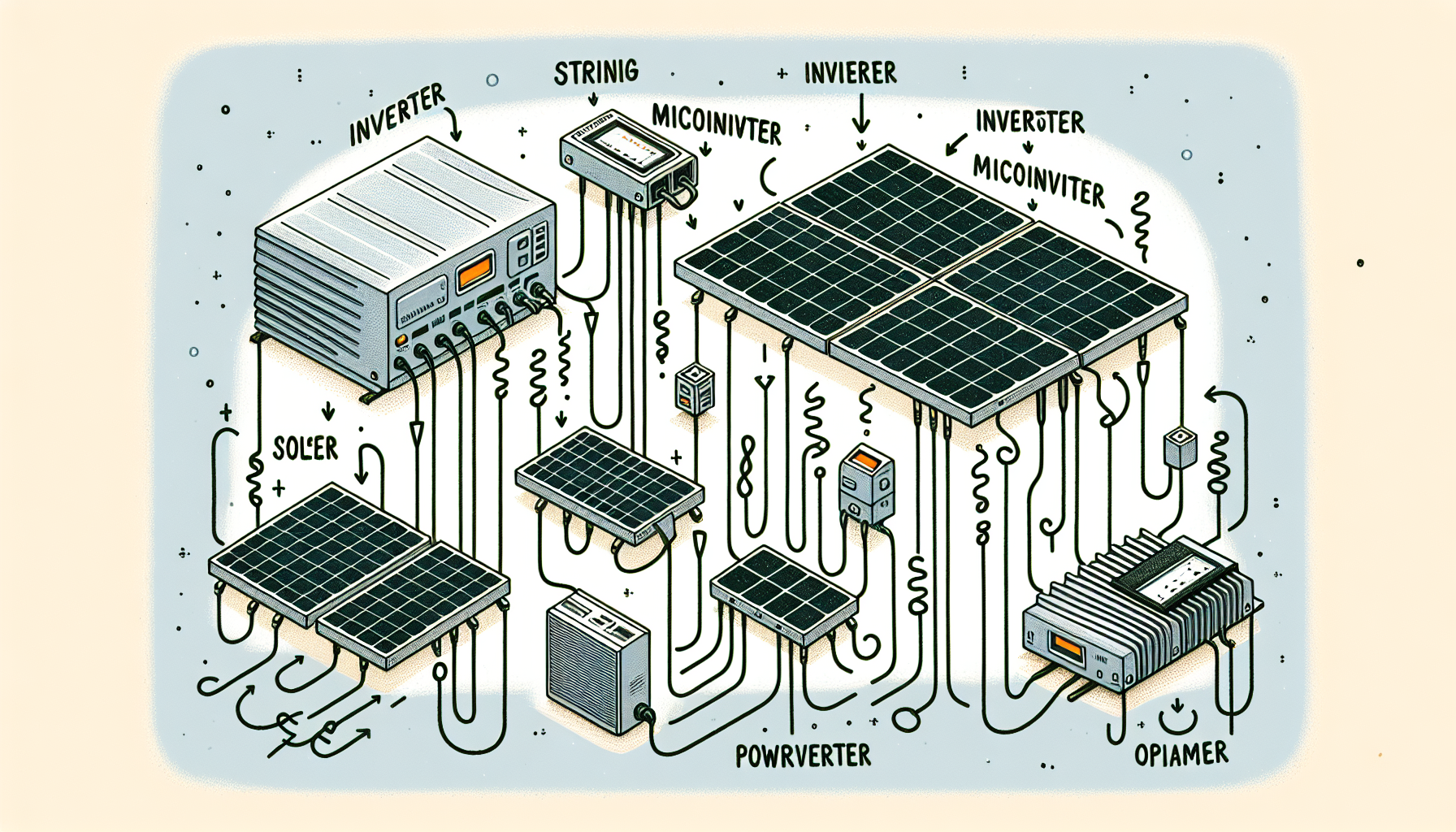The Ultimate Guide To Solar Panel Inverters
The Ultimate Guide To Solar Panel Inverters
A solar panels inverter converts DC electricity from solar panels into AC electricity for home use, making it an essential part of any solar energy system. Understanding the types and features of inverters can help you make informed decisions. This guide covers everything you need to know to choose the best inverter for your needs.
Key Takeaways
- Choosing the appropriate solar panel inverter is essential for maximising energy output, ensuring efficiency, and maintaining the reliability of your solar power system.
- There are several types of solar inverters available—string inverters, microinverters, power optimisers, and hybrid inverters—each suited to different installation scenarios and energy needs.
- Advanced technologies like Maximum Power Point Tracking (MPPT) and smart inverters enhance the performance and efficiency of solar energy systems by optimising energy conversion and integrating seamlessly with the power grid.
Choosing the Best Solar Panels Inverter: A Comprehensive Guide
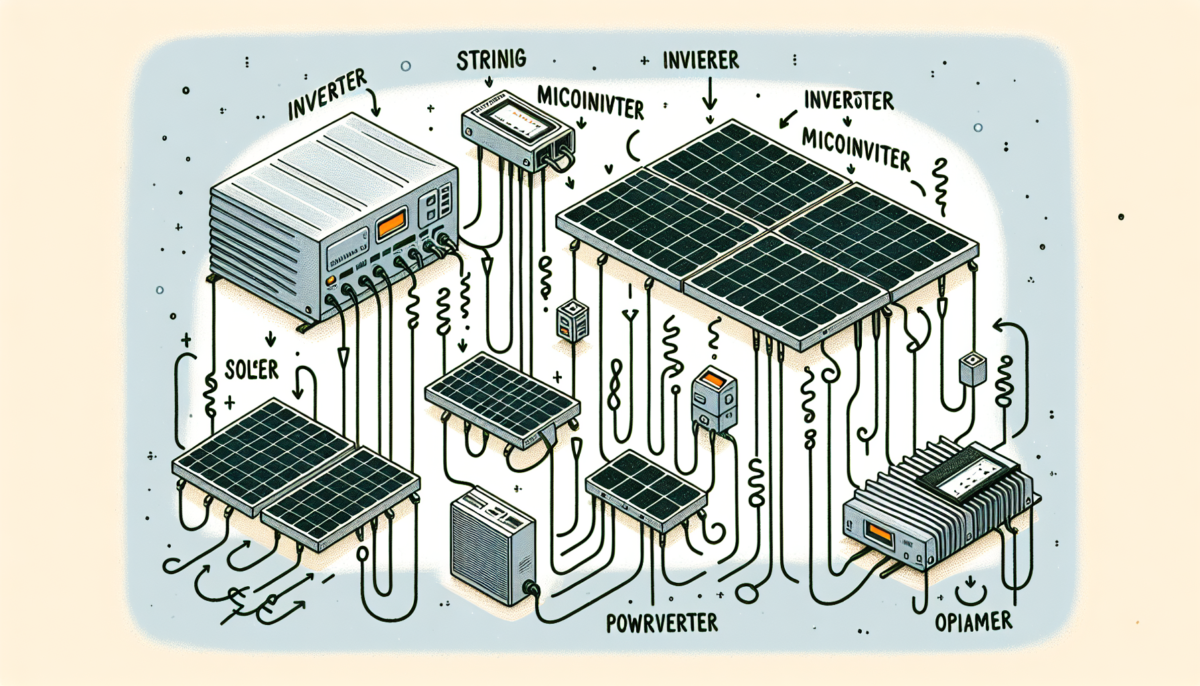
The selection of an optimal solar panel inverter is a significant milestone on your path to efficient solar energy usage. These devices are responsible for converting the direct current (DC) produced by solar panels into alternating current (AC) used by household appliances and for grid connections. Investing in a top-notch inverter allows you to fully utilise the energy produced by your solar panels, solidifying its importance for both residential and commercial properties.
One key factor to consider is the Inverter Loading Ratio (ILR), which is the ratio of installed DC capacity to the inverter’s AC power rating. An ideal ILR can prevent energy loss due to inverter clipping, especially in regions with high irradiance. As we explore the diversity of inverters and their unique advantages, you will gain a clearer comprehension of choosing the most effective and economical option for your specific solar requirements.
Introduction
In the absence of solar inverters, the electricity produced by solar panels wouldn’t align with the primary supply of electrical circuits in homes and businesses. These inverters play a pivotal role in ensuring that the energy harvested from the sun can power everything from lighting to heating systems in your home. The efficiency and cost savings of a solar power system heavily depend on the quality of the solar inverter used.
A high-quality inverter is not just about converting DC to AC; it’s about maximising the energy output and ensuring long-term reliability. By understanding the various types of inverters and their specific applications, you can make an informed decision that aligns with your energy needs and budget. Let us delve into the nature and functioning of a solar panel inverter.
What is a Solar Panel Inverter?
A solar panel inverter is a device that:
- Converts the direct current (DC) electricity generated by solar panels into alternating current (AC) electricity
- Is used by household appliances and for grid connections
- Plays a vital role as the majority of home and business electrical systems function on AC power
- Is a crucial part of any solar panel system
Choosing the right solar inverter can significantly affect the overall installation cost and efficiency of your solar panel system. High-quality inverters not only ensure that the maximum amount of generated energy is utilised but also enhance the longevity and performance of your solar PV system.
How Do Solar Panel Inverters Work?
Solar panel inverters function by transforming the inconsistent direct current (DC) output from solar panels into a consistent alternating current (AC) output. This is achieved through a series of transistors that rapidly turn on and off, feeding the DC through a transformer to produce AC. The process begins with photovoltaic cells in the panels absorbing sunlight, which displaces electrons to generate DC electricity.
Advanced inverters, known as smart inverters, go a step further by interacting with the power grid. They perform functions such as frequency regulation and voltage control, ensuring that the solar energy system harmonises seamlessly with the grid. Understanding this process is key to appreciating the value of investing in a high-quality solar inverter.
Types of Solar Panel Inverters
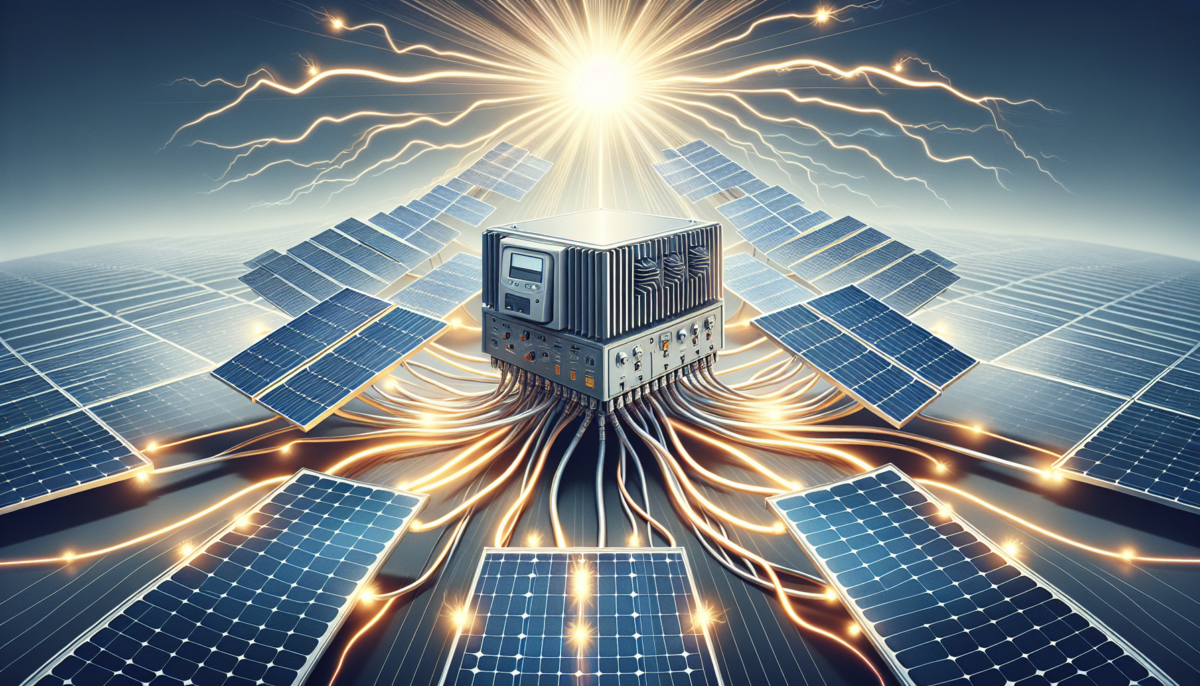
There exist numerous kinds of solar panel inverters, each possessing distinct features and benefits. There are four main types of inverters used in solar installations:
- String inverters
- Microinverters
- Power optimisers
- Hybrid inverters
Each type offers different advantages and may be suitable for different types of solar energy systems. Each type is tailored for various installation scenarios and energy requirements.
There are different types of inverters used in solar systems, each with its advantages and applications:
- String inverters are commonly used in residential systems and are cost-effective for installations where all panels face the same direction and have no shading issues.
- Microinverters: These are attached to each solar panel, allowing for individual monitoring and are ideal for roofs with multiple orientations and shading concerns.
- Power optimisers enhance the performance of each panel by performing maximum power point tracking (MPPT) and are more cost-efficient compared to microinverters.
- Hybrid inverters: combine the functionalities of traditional inverters and battery inverters, offering flexibility in energy storage and management.
String Inverters
String inverters have the following features:
- They link numerous solar panels in a series or string, demanding all panels to maintain the same pitch and orientation for best performance.
- This type of inverter has been around for decades and is a proven technology.
- The inverter can connect multiple strings, converting the DC electricity from the panels into AC electricity for use.
- This allows for greater flexibility and efficiency in power generation.
String inverters are most cost-effective in systems where all panels face the same direction and there are no shading issues. However, if one panel in the string is shaded or damaged, it can affect the overall production of the system. This makes them less suitable for complex roof configurations or areas with shading concerns.
Microinverters
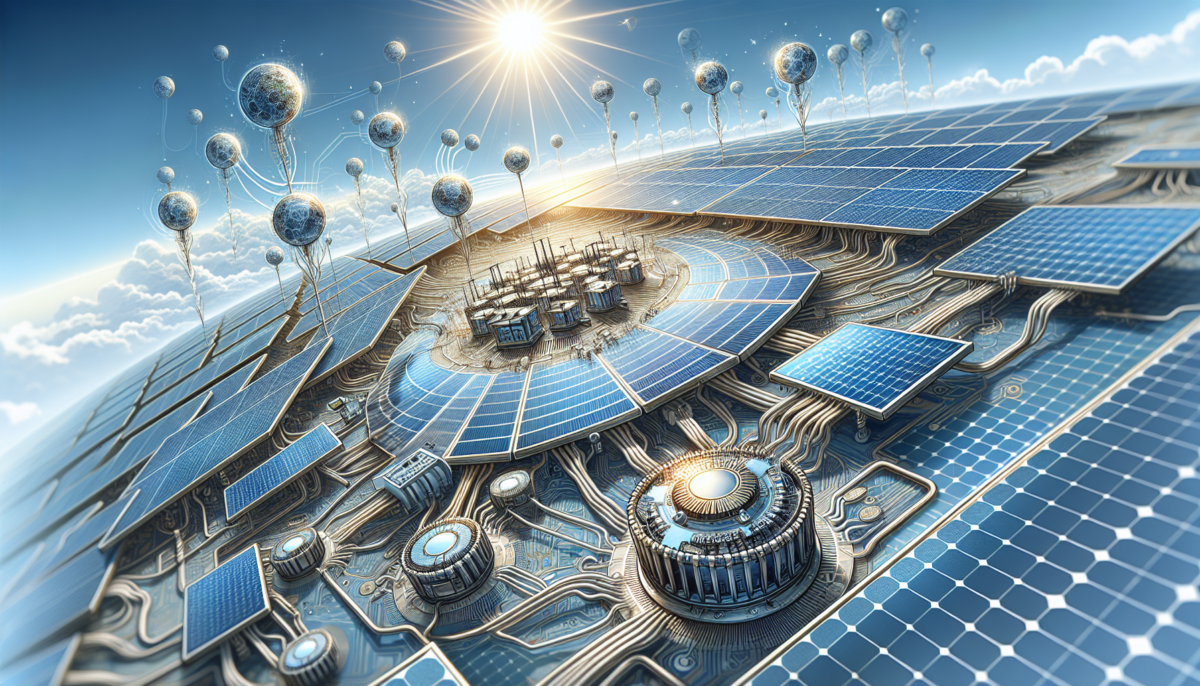
Micro inverters are compact units affixed to each solar panel, transforming DC to AC directly at the panel level. This setup allows each panel to operate independently, which is particularly beneficial for installations with multiple orientations or shading issues. Micro inverters also enable individual panel monitoring, providing detailed performance data and fault isolation.
These inverters are ideal for roofs with varied orientations or partial shading, and they simplify system expansion since additional panels can be easily integrated without significant changes to the existing setup. Microinverters tend to offer a higher return on investment due to increased energy generation and improved system reliability.
Power Optimisers
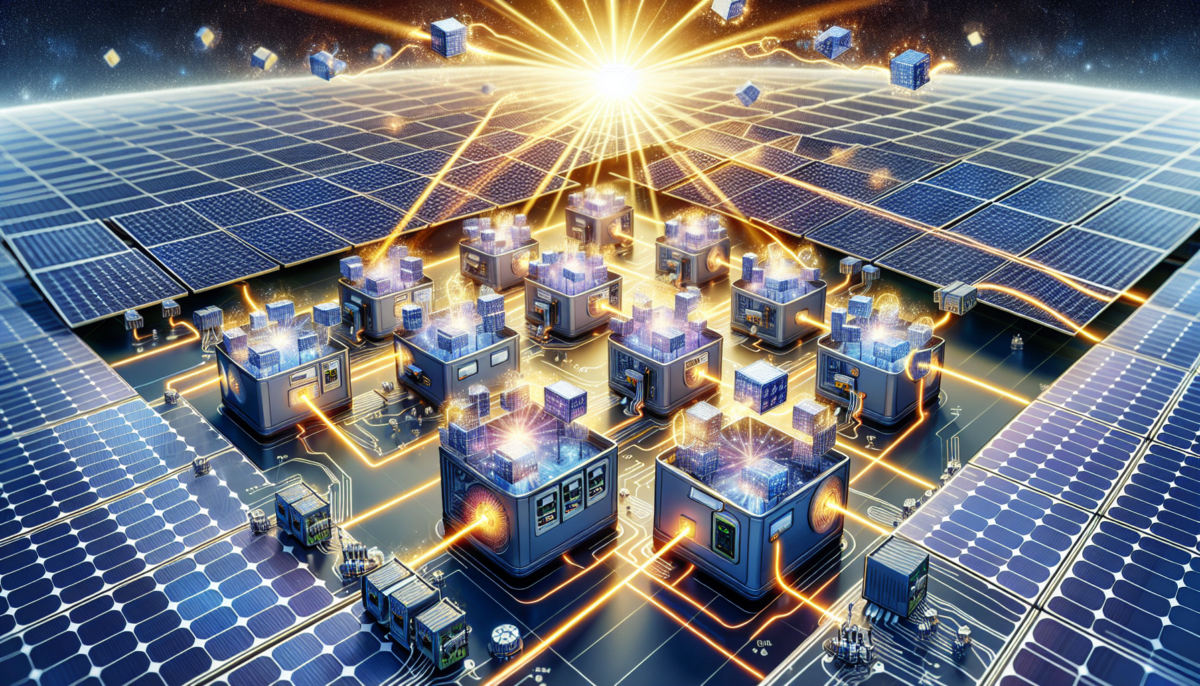
Power optimisers, alternatively termed DC power optimisers, are devices positioned beneath each solar panel to boost its performance through maximum power point tracking (MPPT). They combine the benefits of microinverters and string inverters, connecting to a central inverter for consistent voltage regulation.
Power optimisers offer several advantages over microinverters:
- They allow for individual panel monitoring
- They are more cost-efficient
- They handle issues such as shading or panel faults independently, improving overall system efficiency
- They provide detailed performance data, enabling proactive maintenance and potentially lowering long-term maintenance costs.
Hybrid Inverters
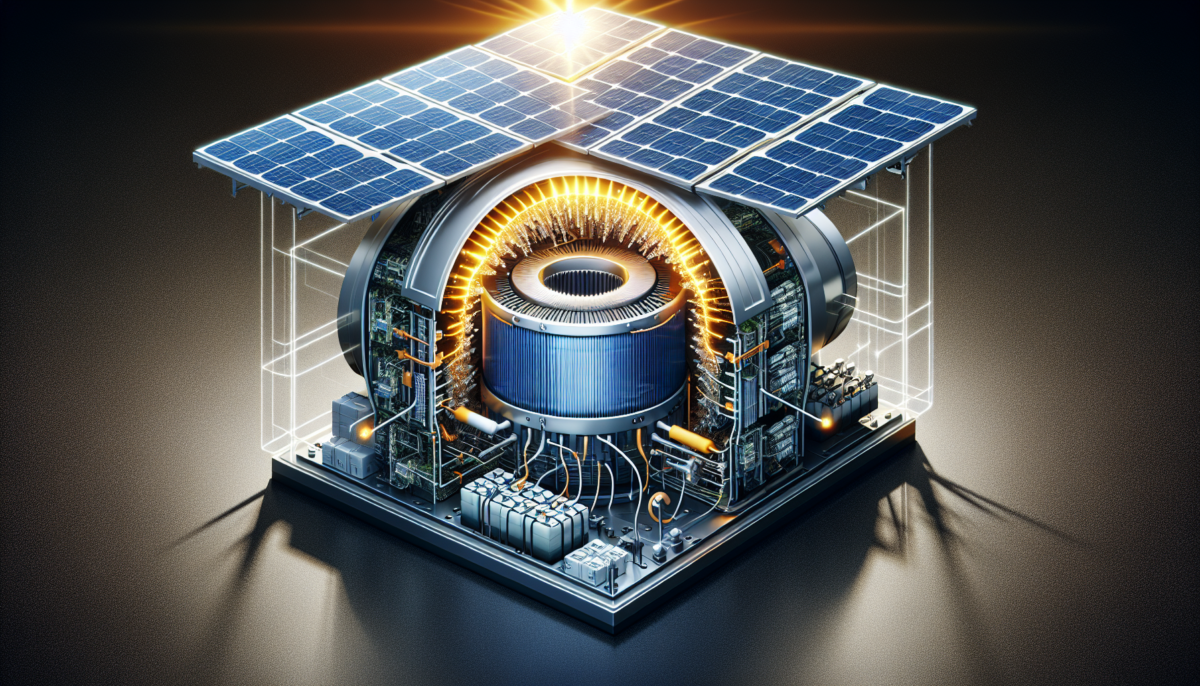
Hybrid inverters are flexible devices capable of:
- Managing energy storage by channelling excess DC power to a battery or the grid
- Converting incoming DC into AC for immediate use
- Storing excess energy in a solar battery or selling it back to the grid
This dual functionality makes hybrid inverters ideal for those looking to maximise their energy efficiency and savings.
Hybrid inverters, including hybrid solar inverter models, offer flexible system designs, supporting different panel orientations and types within a single system. They also allow for the integration of DC-coupled batteries, providing a comprehensive solution for energy management and storage.
Maximum Power Point Tracking (MPPT)
Maximum Power Point Tracking (MPPT) is a vital technology employed in solar inverters to maximise the energy output of solar panels. MPPT continuously adjusts the electrical operating points of the panels to ensure they produce maximum power. This technology is particularly effective in mitigating the impact of partial shading and varying environmental conditions.
By optimising the electrical operating point, MPPT increases the overall conversion of sunlight into electricity, enhancing the efficiency of the solar PV system. Advanced MPPT technology in inverters ensures that even under partial shading or uneven lighting conditions, the system operates at peak efficiency.
Factors to Consider When Choosing a Solar Inverter
While selecting a solar inverter, multiple aspects must be taken into account to guarantee optimal performance and cost efficiency. The efficiency of the inverter is vital, as it indicates the percentage of DC electricity that is converted into usable AC electricity. Inverter costs can vary based on efficiency, power output, and brand, with string inverters generally being the least expensive.
The typical lifespan of a solar inverter ranges from 10 to 15 years, so it may need replacement during the solar panel system’s lifetime. A good warranty is essential for peace of mind and protecting your investment. Some factors to consider when choosing a solar inverter are:
- The length of the warranty, with microinverters and power optimisers often offering longer warranties compared to string inverters
- Compatibility with other system components
- The reputation of the inverter brand
Considering these factors will help ensure that you choose a reliable and durable solar inverter for your system.
Costs and Savings
The monetary perspective of solar inverters is a significant consideration. Here are some typical costs:
- Standard string inverter: £500 to £1,000
- Microinverters: £100 to £150 per unit
- Power optimisers: £40 each, plus an additional central inverter costing around £600
- Hybrid inverters: typically priced at about 50% higher than string inverters due to their advanced functionalities and technologies
Therefore, when considering options for solar inverters, it’s important to factor in the cost difference alongside the specific requirements of your solar system.
Using microinverters or power optimisers can result in higher overall electricity savings and increased Smart Export Guarantee (SEG) payments. A qualified installer can provide detailed advice on the expected savings from using a specific type of solar inverter, ensuring optimal integration with the national grid.
Modern solar inverters now achieve conversion efficiencies exceeding 98%, significantly reducing energy losses.
Installation and Maintenance
Correct installation and maintenance are integral to the enduring performance of your solar panel system. Here are some key steps to follow:
- Install solar inverters in a well-ventilated area, ideally outdoors or in a garage.
- Securely mount the solar panels.
- Test the system to ensure it is working correctly.
Regular maintenance includes cleaning the panels to remove dirt and debris that can reduce efficiency, as well as inspecting both the panels and the inverter. Preventive maintenance, such as visual inspections and annual professional checkups, helps in identifying and resolving issues early.
Modern power inverters offer communication capabilities via Wi-Fi, Ethernet, or Bluetooth, allowing users to monitor power production and system diagnostics.
Common Issues and Troubleshooting
Frequent problems with solar inverters can be detected via monitoring software and visual examinations. A solid green light during the day indicates proper functioning, while a solid red light suggests a problem. Monitoring software helps track system performance and detect issues promptly.
No power output can be caused by grid disconnection, inverter failure, or faulty wiring. Low power output may result from shading, dirt accumulation, or ageing panels. Error codes on inverters can indicate software issues, internal faults, or electrical problems like voltage spikes. Consulting a licensed electrician or solar installer is recommended for complex issues and professional troubleshooting.
Future-Proofing Your Solar System
Future-proofing your solar panel system guarantees its sustained efficiency and adaptability to technological progress. Modern inverter systems like SolarEdge offer the flexibility to mix and match panels, which is crucial as panel technology evolves. This flexibility allows you to upgrade or expand your system without major overhauls.
Integration with IoT and big data technologies in modern inverters enables real-time monitoring and remote control capabilities. Future inverter designs will also focus on environmental sustainability, using eco-friendly materials and manufacturing processes. Additionally, future inverters will integrate seamlessly with smart grids and microgrids, enhancing energy management’s flexibility and efficiency.
Summary
Choosing the right solar inverter is essential for maximising the efficiency and cost-effectiveness of your solar panel system. From understanding what a solar panel inverter does to exploring the different types available, this guide has provided a comprehensive overview to help you make an informed decision. Key factors such as efficiency, cost, lifespan, warranty, and compatibility are crucial considerations.
As you look to the future, consider the flexibility and sustainability of your solar system. Modern inverter systems offer advanced features that not only enhance performance but also future-proof your investment. By staying informed and making strategic choices, you can ensure that your solar energy system remains a valuable asset for years to come.
Frequently Asked Questions
What is a solar panel inverter?
A solar panel inverter converts the DC power generated by solar panels into AC power for household use and the grid.
How do solar panel inverters work?
Solar panel inverters work by converting DC from solar panels into AC through transistors and transformers, making the electricity compatible with home and grid systems. This process enables the usage of solar energy in households and businesses.
What are the different types of solar inverters?
The main types of solar inverters include string inverters, microinverters, power optimisers, and hybrid inverters, each designed for specific setups and requirements. Choose the type that best fits your needs.
What factors should I consider when choosing a solar inverter?
When choosing a solar inverter, consider factors such as efficiency, cost, lifespan, warranty, compatibility with other system components, and brand reputation. These elements will help you make an informed decision.
How can I future-proof my solar system?
To future-proof your solar system, choose a flexible inverter system like SolarEdge that allows for panel upgrades and expansions, integrates IoT and smart grid technologies, and has an eco-friendly design. This will ensure that your system can adapt to future technological advancements and environmental standards.

